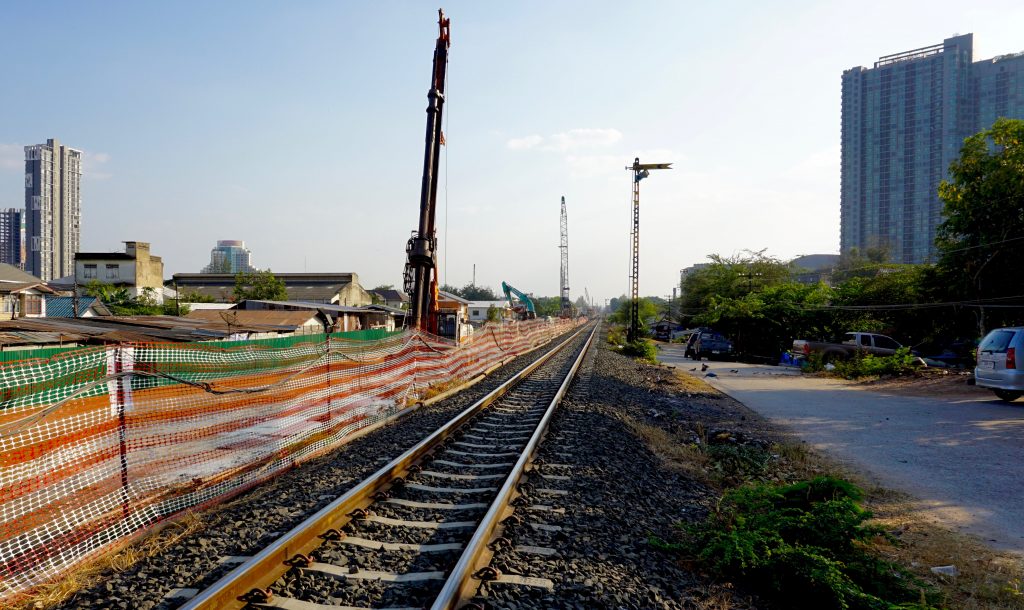The junta’s urban development plans aren’t just about the economy. The city itself is being weaponised against the poor and their politics.
……………
In the last several months, nearly 200 households have been evicted from the communities that line Khon Kaen’s railway tracks. These evictions—like others at Pom Mahakan and along Lad Phrao Canal, as well as the ‘heavy regulation’ of food vendors in Bangkok, the construction of the overbuilt bike path along the Chao Phraya River, and the nation-wide proliferation of luxury shopping malls and condominiums—reveal the convergence between the junta’s economic plans and its political strategy. Urbanisation itself has become a critical mechanism to silence political debate.
Residents living along the tracks in Khon Kaen have been involved in protracted negotiations with the State Railway of Thailand (SRT) to legitimise their claims to this land for well over two decades. During this time they began collaborating with activists and each other to try to make gains. They protested and cooperated with state agencies. They organised and argued with each other. They improved the city with housing and infrastructure projects. Indeed, some communities gained legal rights to the land by signing renewable leases with SRT, among the first in the country.
Through these situated struggles, these neighbourhoods became sites in which new political practices and identities began to take root. Like democracy itself, this process has often been messy and contradictory. However, its results transformed the railway settlements into one of Khon Kaen’s most essential, if often misunderstood, districts; it also transformed many of the district’s residents into active political agents.
As the concrete pillars of the new doubled track project replace homes, businesses, and communities, residents are feeling the full force of this new government. The project’s shifting design schematics, inconsistencies in compensation schemes, and the always-looming threat of Article 44 have stymied residents’ abilities to make plans for the future and have impinged on their efforts to reassert their claims to space in the city.
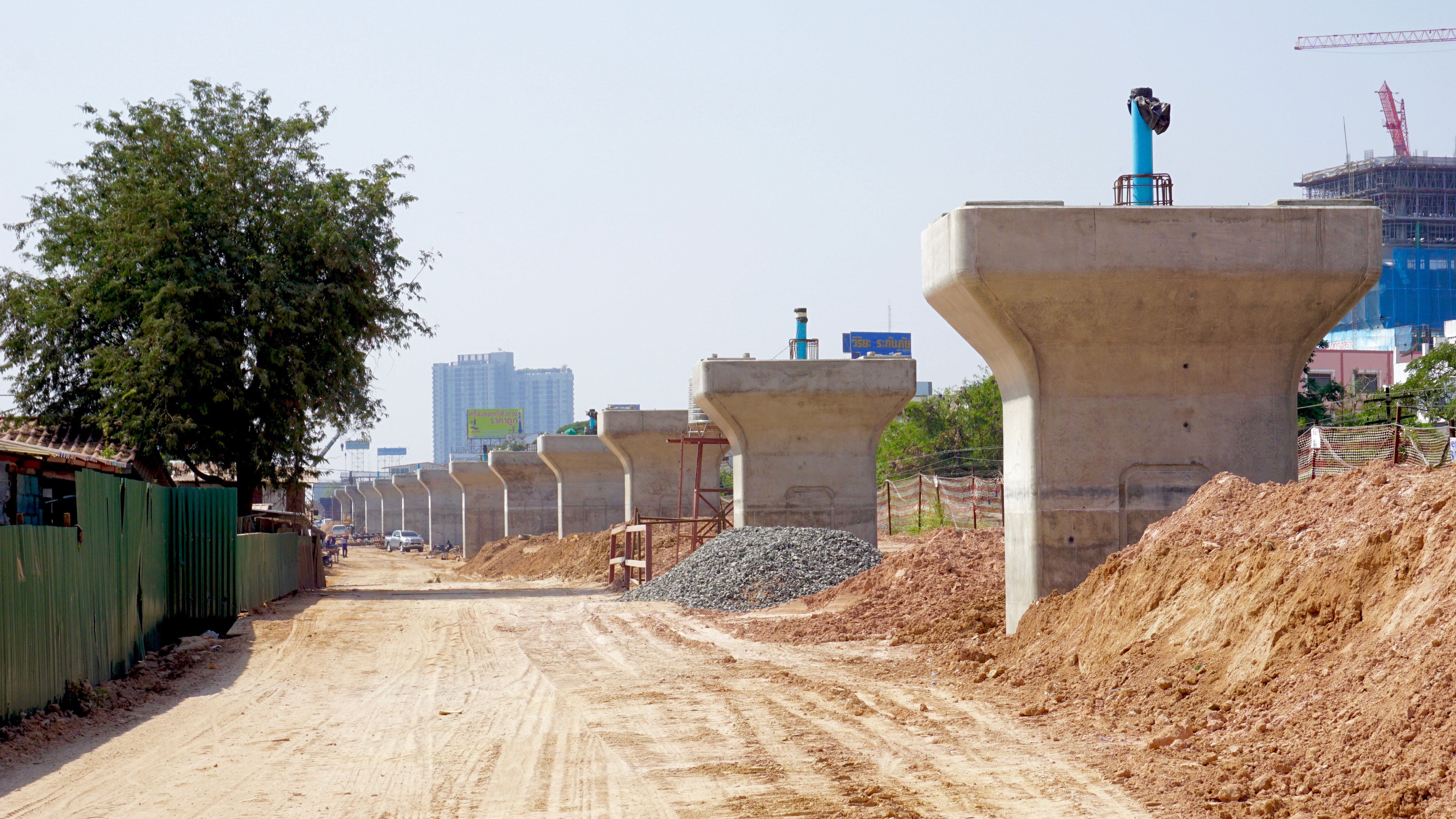
A few months ago, I spoke with one resident who had relocated his family to a treeless rice field far in Khon Kaen’s periphery. He told me that he could feel that evictions were immanent and that if he did not leave soon even the meagre 10,000 Baht he received in compensation would not be available later. ‘The city is growing so fast. Progress is coming with so much dust and noise. So we knew we had to leave.’ Many residents who remain along the tracks have had to demolish significant parts of their homes. Others fear that the new topography of the railway construction site has made their homes into a potential flash flood zone as the rainy season begins. Everyone is concerned that the new high speed project will result in further demolitions. Protests, once a commonplace tactic that was critical for transforming these squatter settlements into rent-paying communities, are now nearly impossible.
The railway is not the only project that is radically transforming Khon Kaen’s cityscape. In 2015, services to the government bus station were slowly rerouted to a shiny new location about 10 kilometres south of the city. The change was not only an inconvenience to the thousands of travellers who come to the city each day to go to school or use provincial services, but also devastating to the hundreds of workers, mainly low income, who have been displaced as fewer and fewer passengers alight at the aging central station. The move prompted a series of local protests that united a disparate coalition of activist-citizens linking poor and middle class business owners in a way the city hadn’t previously seen. Unsurprisingly, the protesters were silenced with intimidation and ‘attitude adjustment’ seminars.
Across from the government bus station an old market has been cleared to make way for a new shopping centre. The city’s mayor told me that land prices have increased by 300% in the last several years.
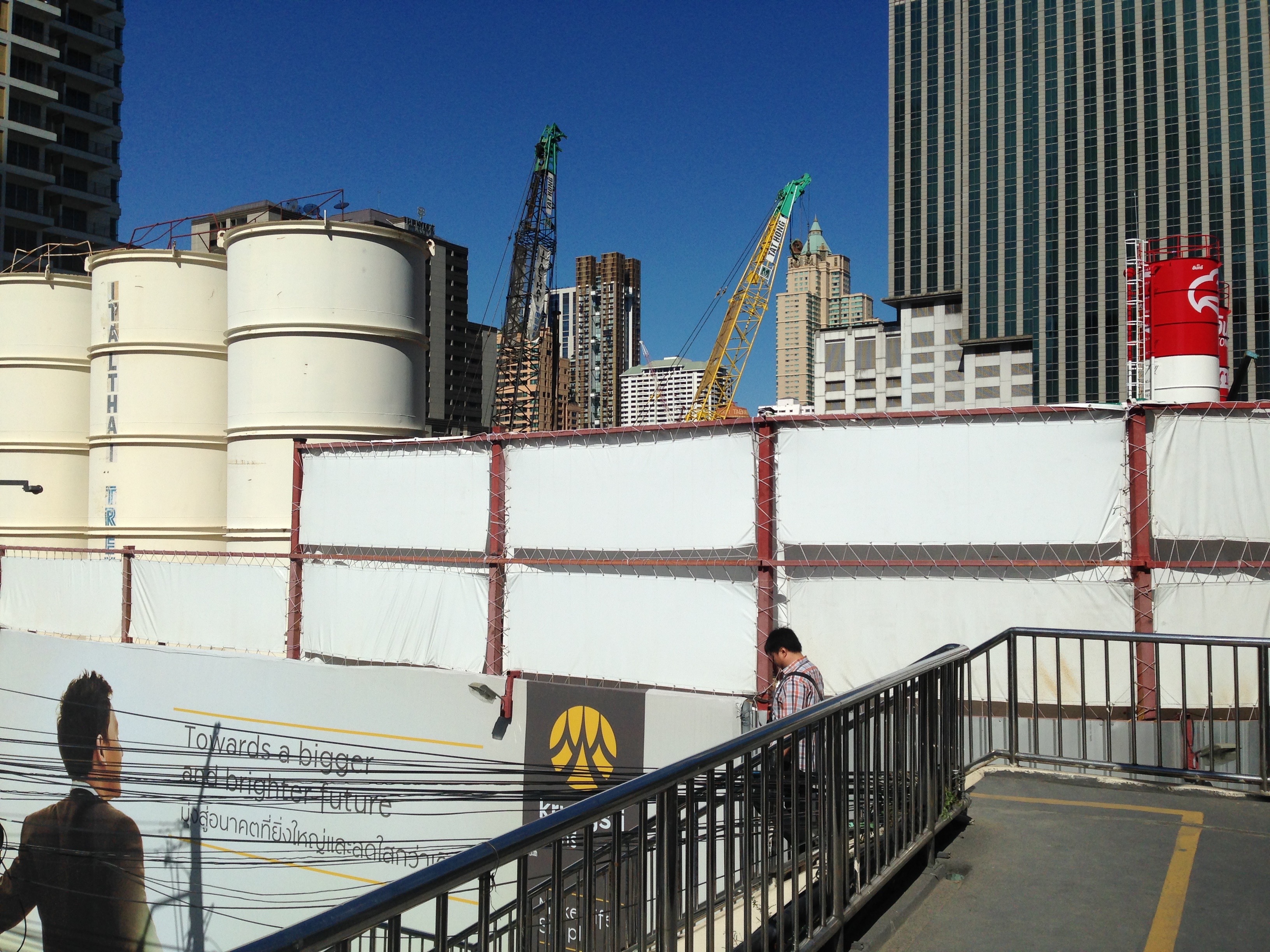
With skyrocketing land values, Khon Kaen’s skyline is turning vertical. Three new high rise condominiums sold out their initial offerings in the first week. Behind the scenes, long term city residents wonder why anyone would buy the apartments amidst the country’s stagnant economic growth. Indeed, most nights the towers are dark; only a handful of warmly lit rooms appear occupied. Further in the city’s periphery, a 3km thoroughfare literally named ‘Rural Road’ is being transformed into a massive tunnel, ostensibly to ease traffic congestion that now clogs the Khon Kaen’s roads; the only problem is that Rural Road never had a traffic problem to begin with.
More than one person I have spoken to has offered the theory that the only logical explanation for all this unnecessary building is that the government is planning to relocate the capital from Bangkok to Khon Kaen, perhaps in response to growing fears of inundation associated with climate change. The sheer scale of construction taking place across Isan is enough to make one wonder if there isn’t some element of truth in these charged speculations. Indeed, from Khon Kaen to Ubon, the region appears as one giant construction site.
The sensation that everything in Thailand is under construction is backed up by the numbers: During first three years of military rule, state-backed construction has been an essential driver of Thailand’s economy, with industry growth skyrocketing in the wake of the coup. Construction now accounts for three percent of GDP.
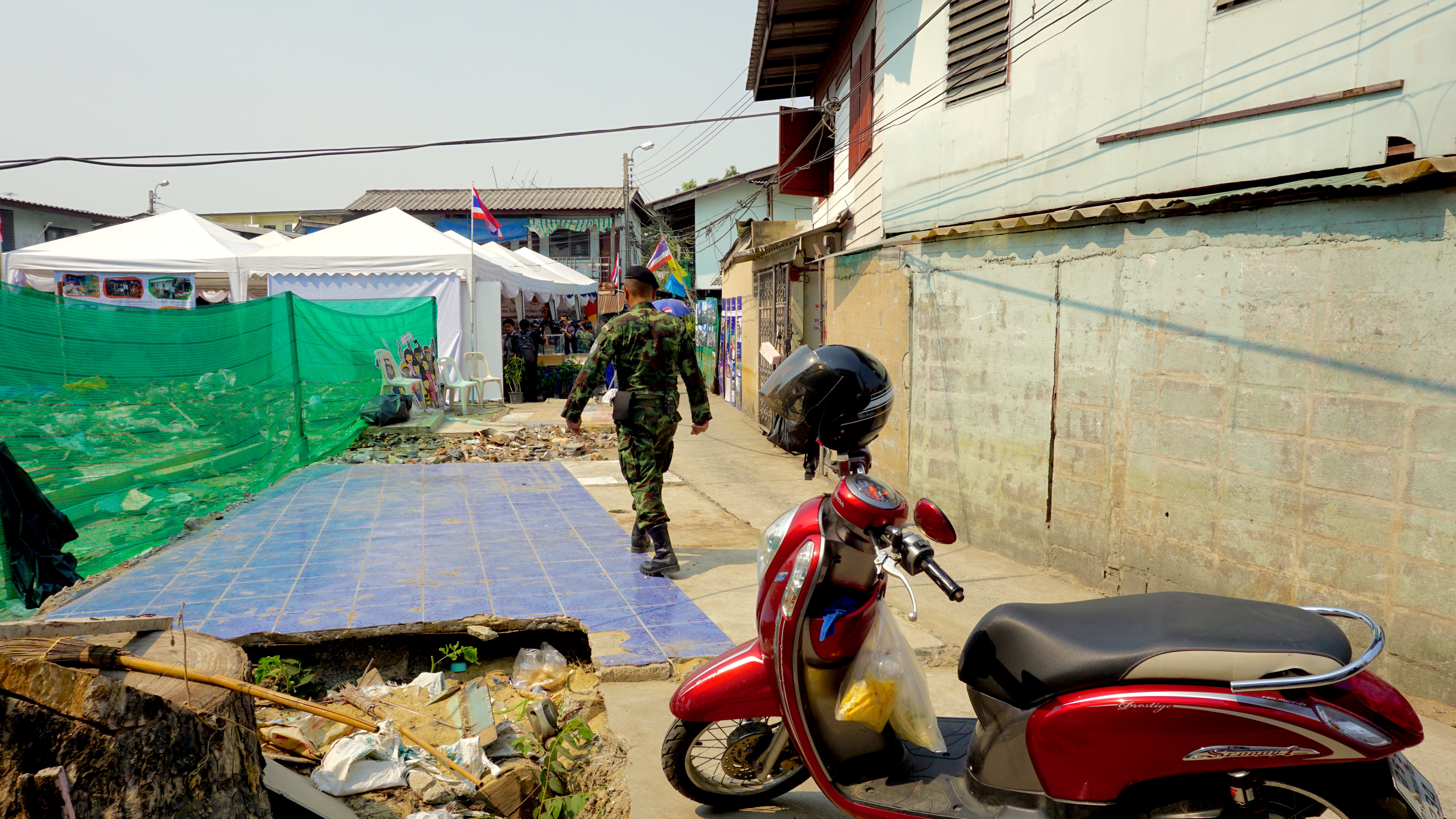
What is the relationship between this rampant construction and the current military government’s political ambitions? Here I want to sketch out a brief argument that the military’s chief mode of governing should be understood through a lens that I call ‘despotic urbanism.’ Such a framework links the sorts of political intimidation, jailing, and re-education practices that have taken place across the country in the years following the coup with these urban mega-projects and their associated luxury political economies. This is a strategy of political suppression by eviction, demolition, and construction.
Despotic urbanism is, of course, a play on Ajaan Thak Chaleomtiarana’s notion of ‘despotic paternalism’ from his brilliant history of Thailand under the military rule of Sarit Thanarat. Ajaan Thak’s book details the rise of the securitised discourse of developmental modernisation as enmeshed with Cold War politics, the technical assistance of the US government, and the use of the communist threat to expand state authority via development initiatives into the provinces.
It is not new to draw parallels between the 1950s and the present military regime. In the wake of the 2014 military coup, numerous scholars noted that Sarit’s government, rather than more recent military interventions, should be taken as the guide for understanding the current regime. Indeed, the junta’s direct and oblique assaults on organisers, scholars, activists, and dissident communities look a great deal like the anti-communist campaigns of the 1950s, so too do the military’s infrastructural ambitions.
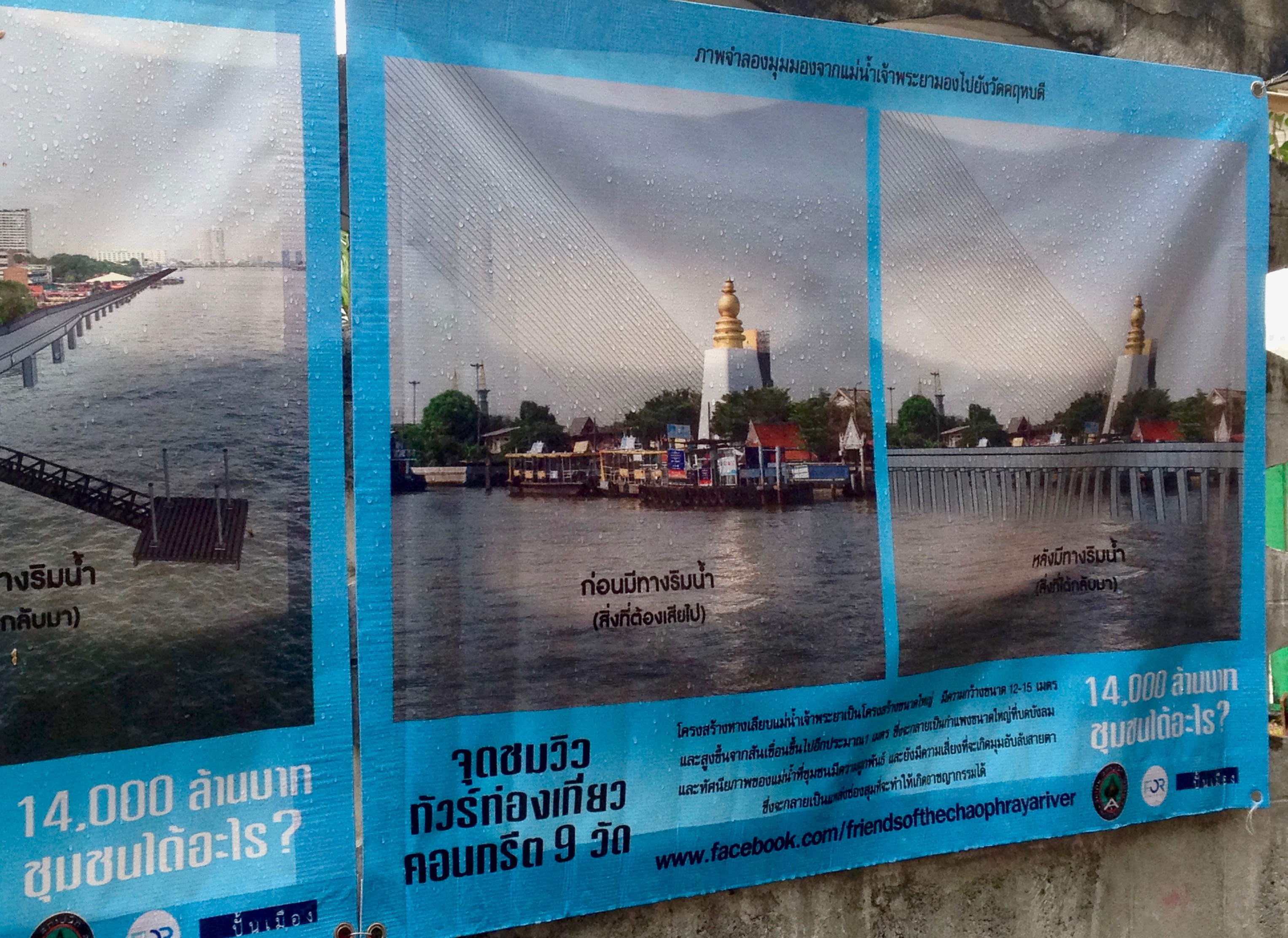
Nevertheless, what I take to be a key difference between this new moment and the older formulation is the way the urban forces—infrastructure, real estate, finance capital, and construction—have become essential political tools. The spate of newly aggressive evictions, the growth of markets catering to middle and high end urban consumers, and sheer scale of the country’s extensive construction projects can only be understood in relation to this broader political context. While threats, detentions, and arrests have targeted openly political actors, urbanisation itself has become an important diffuse tactic used to eliminate other political spaces. No longer embedded in Cold War political economies or developmentalist discourses of modernisation, the military aims to promote political order through spatial order by targeting critical zones of everyday politics—the streets, squatter communities, markets, and monuments.
This vision of spatial and political order has deep historical roots in projects that relocated highlands communities of the North and forest communities of the Northeast. Indeed, urban initiatives of what Michael Herzfeld calls spatial cleansing and its paired aesthetic value of khwam riap roi are hardly new either. Yet, unlike the previous period’s developmentalism, the military’s current projects don’t bear a coherent vision of a modern Thailand or any particularly clear economic discourse of development. Some of them suggest a Singapore-like vision of spatial order, others seem opportunistic responses to the shifting regional economies towards China, and many, many more, emerge out of piecemeal opportunities forged by urban capital. Although industry reports show that private construction remains sluggish, the growing gap between luxury and non-luxury real estate markets in Bangkok show that while the broader economy has stalled, the luxury market continues to boom. These are the class contours of the despotic city.
From the planned Special Economic Zones across the country, to the High-Speed Rail and Doubled-Track projects, to new condominiums and malls, to the remaking of the Chao Phraya riverfront, the military’s vision of achieving political order through spatial order demonstrates how urban forces are not only fundamental parts of the junta’s economic vision but also some of its most important means of remaking the nation’s politics as well: in many cases evicting the very voices who were so essential to producing democracy in the first place. Read in this light, all this construction takes on a new dimension; the city itself is being weaponised against the poor and their politics.

The coherence of Sarit’s ‘despotic paternalism,’ Thak tells us, is found in the way the military forged a relationship between discourses of national security and policies of national development. For the current regime and its supporters, the political project has been to reset the country to its old order by subordinating the voices that demanded democracy during the first decade of the 21st century, while expanding the promise of the modern consumer city. The proliferation of diffuse urban projects—with mixtures of public and private capital underwritten by the coercive force of Article 44—have stripped the previous elements of care, but are no less critical to enacting the junta’s political aims. In this sense, the coherence of ‘despotic urbanism’ is found in the seeming incoherence of these urban projects. Urbanisation—both concentrated in infrastructure projects like the double track projects and diffuse in the forms of private luxury development—becomes a raw force evicting problematic voices, demolishing spaces of politics, and constructing a city, not for citizens but for the sake of the productive forces of urbanisation itself: real estate, finance capital, and construction. A correlation to this reading is that if activists hope to enact political change, then urban causes need to be seen as democratic causes and democratic causes should take up these explicitly urban struggles for space and rights.
On 14 April the plaque dedicated to the 1932 people’s revolution and its early aspirations for democracy was removed under the cover of darkness from its resting place in front of the Royal Plaza. In its place there was a new plaque bearing the message that said national loyalty and ‘fresh-faced citizens’ were central to bringing progress to the nation. Although the underlying political sentiments of the removal are fairly clear, precisely who removed it remains a mystery. Online commentaries have focused on the important differences in the text between the two plaques, some activists quickly honed in other details that raised questions surrounding who installed it. On Facebook, one activist used a measuring tape to highlight the precise square of freshly poured concrete around the new plaque. It was a clever way of pointing out that the removal and demolition of the old monument and installation of the new one was no simple job, but rather a small act of eviction, demolition, and construction in its own right.
As Reuters reported, General Prayuth responded to questions surrounding the plaque by saying, ‘It is no good whatsoever to ask for it back tomorrow…People need to know the laws. You can’t just claim rights and liberty and do everything.’ And with that, the general well-encapsulated the politics of this moment: The production of a new political order will be done by evicting potentially disruptive forces, the demolishing their spaces and with it their history, while casting a new history in hardened concrete.
……………
Eli Elinoff is a lecturer in Cultural Anthropology at Victoria University of Wellington. He has published work in South East Asia Research, Political and Legal Anthropology Review, Contemporary Southeast Asia, and the Journal of the Royal Anthropological Institute.
 Facebook
Facebook  Twitter
Twitter  Soundcloud
Soundcloud  Youtube
Youtube  Rss
Rss 